Do you have a question about the Samsung C32R50 Series and is the answer not in the manual?
Ensure adequate space around the product for ventilation to prevent overheating and damage.
General warnings about potential injury or property damage from incorrect usage or instructions.
Advice on preventing stains on high-glossy models and avoiding screen damage from pressure or objects.
Instructions for safely cleaning the monitor panel and exterior using soft cloths and appropriate agents.
Warnings and precautions regarding the use of power cords, plugs, sockets, and avoiding electrical hazards.
Warnings and cautions related to product installation, ventilation, stability, and environmental factors.
Safety warnings and precautions during product operation, including high voltage, moving, and avoiding foreign objects.
Identifies key components of the monitor and their functions, including the JOG button and power LED.
Explains the functions of the JOG button, power LED, and how to use the Function Key Guide.
Details the shortcut button screen (OSD menu) and its options for Analog and HDMI modes.
Explains how to navigate the Function Key Guide to change input signals, access OSD, and control features.
Instructions on adjusting brightness, contrast, and sharpness settings, including availability constraints.
Guide to adjusting volume, including its availability in HDMI mode and the Auto Mute function.
Details the different ports (HDMI, D-SUB, DC) on the monitor and their connection purposes.
Instructions on how to adjust the monitor's tilt angle for optimal viewing.
Explains the use of an anti-theft lock to secure the product in public places.
Safety guidelines for moving the monitor, avoiding screen pressure, and holding it correctly.
Step-by-step instructions and notes for attaching a wall-mount kit or desktop stand.
Detailed steps for assembling and attaching the monitor stand to the product.
Step-by-step instructions for safely removing the monitor stand from the product.
Essential steps to follow before connecting cables and powering on the monitor for safe setup.
Guidance on connecting the monitor to a PC, including using HDMI or HDMI-DVI cables.
Instructions for connecting the monitor to a PC using a D-SUB (Analog) cable.
How to connect headphones to the monitor for audio output, specifying compatible jack types.
Steps for connecting the AC/DC adapter and power cable to turn on the monitor for both C27R50* and C32R50* models.
Recommendations for maintaining correct posture while using the monitor to prevent eye strain and physical discomfort.
Instructions on how to install necessary drivers from the Samsung website for optimal performance.
Guidance on setting the optimal resolution for the monitor, including initial setup messages and PC settings.
Explains the MAGIC Bright feature for optimizing picture quality and customizing brightness in PC and AV modes.
Details on how to adjust the general brightness of the picture and its availability constraints.
Instructions for adjusting contrast between objects and background for clearer image appearance.
How to adjust sharpness to make object outlines clearer or blurrier.
Guide to adjusting color tint, saturation (Red, Green, Blue), color tone, and gamma settings.
How to adjust image quality for HDMI connections, particularly for contrast/color degradation.
Explanation of the Eye Saver Mode for eye relaxation by reducing blue light.
Settings for optimizing the screen for gaming, including activation conditions.
How to adjust response time for vivid video playback and gaming.
Options for changing picture size (Auto, Wide, 4:3, 16:9, Screen Fit) based on input mode.
Details on screen adjustment options like H-Position, V-Position, Coarse, and Fine tuning, available in Analog mode.
How to adjust the transparency level of the menu windows.
How to adjust the horizontal and vertical position of the OSD menu.
How to change the menu language for the onscreen display.
How to set the time after which the OSD menu automatically disappears.
Steps to perform a self-diagnosis test to check for monitor picture problems.
Interpreting results of the self-diagnosis test and actions to take based on 'Yes' or 'No' outcomes.
Explanation of FreeSync technology for eliminating screen tearing and lag, with usage notes and potential symptoms.
List of AMD graphics card models that support FreeSync and how to enable it via AMD Radeon Settings.
How the Eco Saving Plus function reduces power consumption with different saving levels.
How to set the Off Timer to automatically power off the product after a specified time.
How to set PC/AV mode for optimal picture size when viewing movies or connecting to devices.
How to select Auto or Manual mode for input signal recognition.
How to control the response rate of buttons when pressed, including acceleration options.
How to configure the power LED indicator, choosing between 'Working' and 'Stand-by' modes.
How to view current input source, frequency, and resolution information on the monitor.
Explanation of Easy Setting Box for partitioning screen sections and how to install it.
Lists the OS and hardware requirements for installing the Easy Setting Box software.
Potential issues affecting Easy Setting Box installation related to graphics card, motherboard, and networking.
Steps to test the product before contacting customer service for assistance.
How to check if the product is operating normally using the product test function.
How to handle 'Not Optimum Mode' messages by checking resolution and frequency.
Troubleshooting common installation problems like screen switching on/off or blank spaces.
Solutions for screen problems such as power LED off, no image, or 'Check Signal Cable' message.
How to resolve the 'Not Optimum Mode' message by adjusting resolution and frequency.
Troubleshooting common display problems including distortion, blurriness, instability, brightness, and color issues.
Resolving issues where there is no image and the power LED blinks.
Resolving issues with choppy video playback and no or low sound output.
Methods to improve the clarity of on-screen text.
Guide on how to change the screen refresh frequency via PC graphics card settings for different Windows versions.
Guide on how to change the screen resolution via PC settings for different Windows versions.
Instructions on how to set power-saving modes in Windows for different versions.
Key specifications for C27R50* and C32R50* models including size, display area, power, and connectors.
Operating and storage temperature and humidity ranges for the monitor.
Information on Plug-and-Play compatibility and pixel characteristics of the LCD panel.
Table listing supported signal modes, resolutions, frequencies, and sync polarities for the C27R50* model.
Table listing supported signal modes, resolutions, frequencies, and sync polarities for the C32R50* model.
Detailed tables for VGA and HDMI resolutions, frequencies, pixel clocks, and sync polarities.
Explains horizontal frequency, vertical frequency, and recommendations for selecting optimum resolution.
Cases where a service fee may be charged even if the product is under warranty.
Clarifies situations considered 'not a product defect' that might incur service charges.
Lists types of product damage caused by customer mishandling or improper repair.
Other situations where service may be charged, such as natural disasters or consumable component failure.
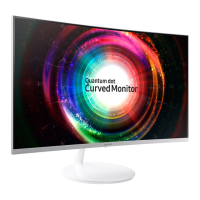

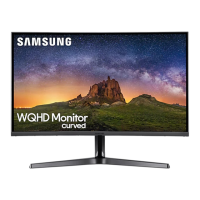
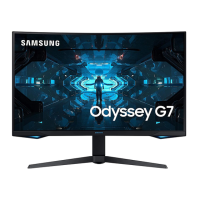
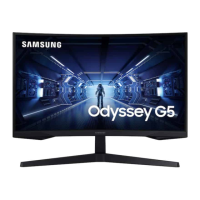
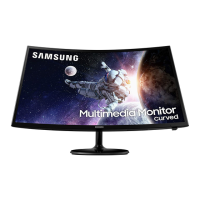




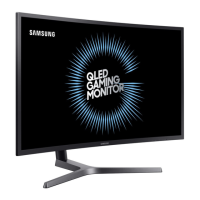

